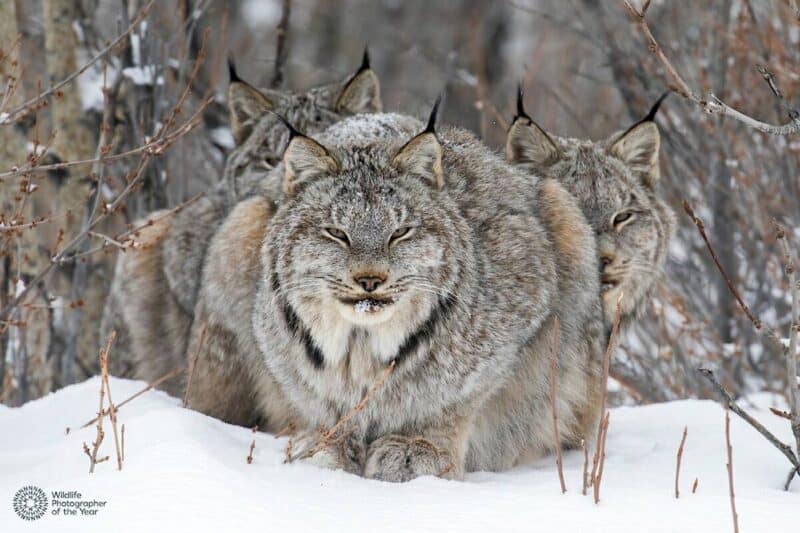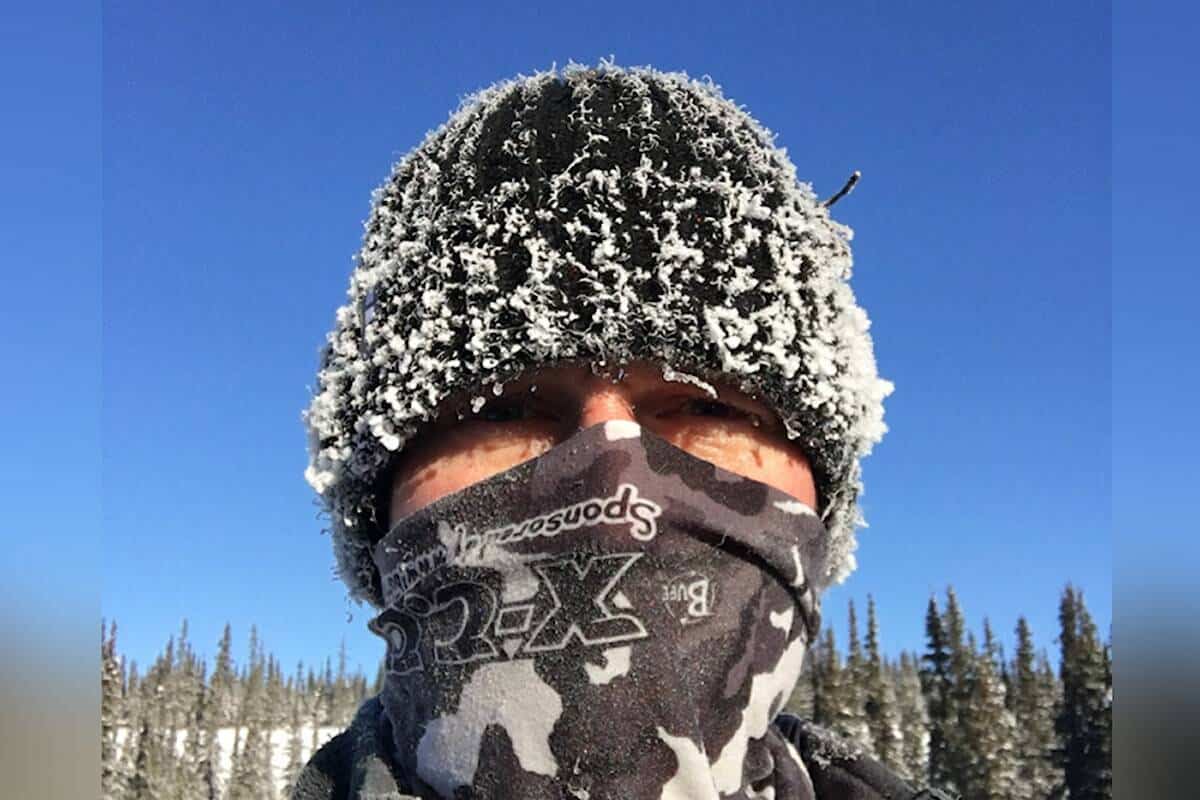Best-selling author and professional wildlife and nature photographer John E. Marriott has reached another pinnacle in his career.
A passion for wildlife conservation and a keen eye have earned Marriott the title of Wildlife Photographer of the Year in the most hotly contested Animal Portraits category in the prestigious Natural History Museum’s 60th year of competition.
Marriott’s On Watch, an engaging image of a trio of lynx huddled together sheltering from the cold during a windy winter day in the Yukon, was selected out of nearly 60,000 entries from 117 different countries.
“This is the Oscars of wildlife photography and the best analogy I can give is someone from Salmon Arm winning an Olympic medal,” said the elated photographer, who was in London, England to receive his award at a black-tie event Oct. 8. “It was a staggering mind-blowing event unlike anything I’ve ever been to before, and the only possible pinnacle above would be to win the grand title.”
Marriott was one of 11 photographers who went to the awards knowing he had won in one of the categories and possibly taken the top award, which went to a Vancouver photographer.
But well before the grand celebration came the long hours spent in bitterly cold weather.
In February 2020, just before Covid shut much of the world down, Marriott was 12 days into a two-week search for some of Canada’s big cats.
It was minus 29 C, 7 a.m. and pitch black when Marriott headed out in his truck looking for lynx tracks.
When he found them, he put on his snowshoes and spent the next several hours following the tracks in the snow.
“At certain times of the day, I couldn’t see them, but I could still see their tracks,” he said, pointing out that for the first 12 days he couldn’t catch up to the lynx but had seen their tracks and knew they were in the area. “When you actually see them, it’s an adrenaline-induced experience, a big thrill!”
An experienced wildlife photographer accustomed to working in the backcountry, Marriott said he can sense right away whether his subjects are going to be comfortable with his presence or not.
“Do I give up or keep going? In this case, when I first saw them, the mother just went about her business so I knew this might work,” he said of the mother and her two adult cubs. “I just kind of try to absorb into their world, just respectfully follow along, watch them hunt, sleep and travel. It’s almost like I am a fly on the wall in their world.”
Marriott found the trio’s tracks around midday and followed them for two kilometres before he saw them. He continued tracking them for another two kilometres while they successfully hunted for snowshoe hares. They got two and, with full bellies, found a spot in which to nap together on the edge of a band of willows. It was a chilly minus 20 C, 4 p.m. and close to the end of the day when Marriott got his award-winning shot.
“I approached slowly to about 40 metres from the family, took a series of pictures for five to 10 minutes, then slowly backed away and waited until the family decided to move again, which was about 45 minutes later,” he said. “There was no hide or bait or calling involved, it was all natural, like all of my photography.”
READ MORE: Vancouver Island campaign shares ethical bear viewing essentials
With several images and daylight quickly fading, Marriott made his way back to his truck.
“Fortunately for me, they did a loop so I had only about two kilometres to go,” he said, noting that a tracking and communications device keeps him apprised of his route. “I am never nervous. I’m confident in my own abilities in the snow and in winter, and I can certainly survive for a day or two if something goes wrong.”
Marriott will be heading out into the wilds of Western Canada in November to complete the final winter of a five-year study of the big cats he loves.
“My primary motive in photographing for the Big Cats of Canada is to raise awareness on issues like the poorly-regulated and antiquated fur industry here in Canada, where trappers are allowed to kill unlimited numbers of lynx for their furs in many regions of the country,” he said, pointing out Canadian trappers kill more than 5,000 lynx a year to supply pelts to the fashion industry in Europe and Asia while averaging less than $100 per fur.
This is the third time Marriott, one of Canada’s most well-known wildlife photographers, has been awarded or nominated in the competition. In 2012, his raven image, Fluff-Up was First Runner-Up in the Animal Portraits category and was then used as the main marketing image for the 2013 World Tour, and in 2023, his grizzly bear photograph, Looking at Me, Looking at You, was nominated for the People’s Choice Awards.
Part of Marriott’s acceptance speech acknowledged overcoming both colon and kidney cancer two years ago. It was on Oct. 8, 2022 that Marriott learned his surgery date to remove both tumours.
“I was overwhelmed with emotion when I first got on stage and to say that it was the pinnacle of my career would probably not do the moment justice given what I’ve been through in the past few years.”
In his career spanning three decades, his images have been published worldwide by National Geographic, BBC Wildlife, Canadian Geographic, McLean’s and Reader’s Digest.
Marriott is an Associate Fellow with the International League of Conservation Photographers, a Canon Ambassador, and the co-founder of the EXPOSED Wildlife Conservancy environmental charity.
He has produced eight coffee table books, including The Kootenay Wolves: Five Years Following a Wild Wolf Pack (2022), What Bears Teach Us (2020), Tall Tales, Long Lenses: My Adventures in Photography (2017), The Pipestone Wolves: The Rise and Fall of a Wolf Family (2016), and the international bestseller, Banff & Lake Louise: Images of Banff National Park (2007).
Plan your adventures throughout the West Coast at westcoasttraveller.com and follow us on Facebook and Instagram @thewestcoasttraveller. And for the top West Coast Travel stories of the week delivered right to your inbox, sign up for our weekly Armchair Traveller newsletter!












 Vancouver Island campaign shares ethical bear viewing essentials
Vancouver Island campaign shares ethical bear viewing essentials